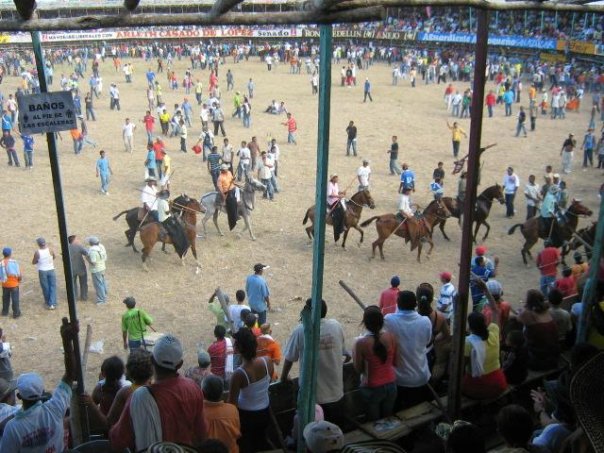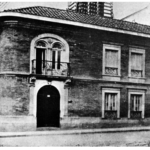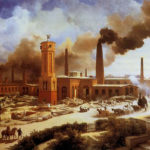Bubble inhabitants live in a world surrounded by an invisible yet effective firewall that protects them from allegedly vicious external sources, disinformation included. In such a paradise, harm is almost always pushed back if it attempts to cross it. And bliss emerges in a world of subtle, ample ignorance. While many might know they live in such a nirvana and will go out of their way to protect it, most probably do not know. And they are not asking any questions, in any event. That was my case back then.
Violence in the country has been pervasive since the 1940s. The murder of a widely supported populist leader in 1948 exacerbated an already untenable situation by bringing a primarily rural and agrarian conflict to the Capital city. Five years later, the governing elites decided to put the army in charge in a magisterial auto-coup d’état that ended in 1957 with an agreement between the two main political parties known as the National Front. For the next 20 years, the two parties would alternate the country’s Presidency, with one party not postulating any candidates when the other was supposed to be elected. It was not a very democratic process, that is for sure. Regardless, that did not stop the country-side violence that was starting to change from party affiliation and local power distribution to land appropriation and expropriation by both parties at the expense of peasants and small land owners. The success of the Cuban Revolution empowered the latter, who received support from left-wing organizations. At the same time, geopolitics entered the country big time, with Kennedy’s Alliance for Progress designed to stop the spread of communism in the region. Kennedy was in Colombia in 1961 for 14 hours, an event we saw on national TV; his wife led the Spanish language public speaking and translations from English.
Kennedy’s plan originally had a primarily developmental angle, but soon, the military components took over. As a result, the anti-communist Plan Lazo, developed under the auspices of the US government and army, became national law in 1962, supported by the newly elected Conservative Party government. It gave the national army carte blanche to eliminate real and imaginary enemies. Things came to a head in 1964 when the army and air force attacked Marquetalia, a rural bottom-up community that had declared independence from the country a couple of years before. All media channels quickly claim total victory in a classic case of a disinformation campaign that went unchallenged for many years. The reality was more complex as most community Marquetalia members, while displaced, survived and decided to create the FARC. And the rest is history – with violence having a constant presence.
All this was unbeknownst to me. Indeed, Kalimán never mentioned any of this. His adventures took place in a different dimension, also protected from the harshness of the Real, like my little bubble. But cracks in the facade soon started to appear, albeit in slow motion. The 1968 French student quasi-revolution and its spread to other countries were fascinating yet mysterious to me. I quickly associated it with the Hippie movement that emerged almost at the same time. They were two sides of the same coin in my limited universe. Revolution, love and peace somehow perfectly fit in my tiny world.
The April 19, 1970, national election made a more significant dent. The army General who was enticed to lead the 1953 coup decided to challenge the foundations of the National Front and compete against the Conservative Party that, given internal disputes and rivalries, fielded three candidates. By 10 p.m., the results indicated the now-retired General was leading by an ample margin and could, in fact, win. The government suddenly ordered all media to stop reporting election results and wait until the following morning; by then, the Electoral Commission would have finished vote tabulation. The General and his millions of followers were extremely upset and threatened to revolt. The outgoing President unexpectedly declared a state of emergency, thus suspending all constitutional rights. Hundreds were arrested and imprisoned while one of the Conservative candidates was declared the winner.
Once again, radio was the primary information and disinformation source. I still vividly remember that evening, listening to the results at home with my father, who was nervously expressing deep concern about the situation. He was undoubtedly not on the General’s side but was not ready to accept a fraudulent result either. He thought someone was lying; most radio outlets spat false information all around, he concluded. In any event, Capital City elites feared the General’s “hordes” were getting ready to march North of the city and invade their valuable homes – disinformation in action! They had to be stopped by any means. In their view, the President’s action saved them. Democracy had to be sacrificed yet again. Regardless, such nefarious developments led to the creation of the M-19 urban guerilla movement that, for several years, had ample popular support.
An unexpected visit to the Caribbean plains in the country’s North was an even bigger eye-opener. A Senior High classmate invited me and two others to join him for his hometown’s Christmas/New Year celebrations. Although we had recently gone out together a few times, he was not on my tiny list of friends. He said he had a house in town and a Hacienda nearby where we could ride horses and drink beer freely, among other things. The latter sounded the most enticing to me. The invitation was for two weeks. He offered to pay for the travel expenses and all meals and accommodations. When we asked about airlines, as our parents were wondering about travel details, he informed us that we would be taking a cargo plane run by the Colombian Air Force departing on the agreed date and landing at the State Capital, a stone’s throw from his hometown. That sounded even more exciting. The flight alone was exhilarating as the plane had no regular seats or other comforts usually offered by commercial airlines. It took less than 90 minutes, but we felt like we were going to the moon. Move over, Neil!
While the house in town was smaller than expected, the Hacienda was gigantic. We could ride his horses for hours, following different paths before returning to the main stable. The Hacienda was really a cattle farm business that was expanding rapidly, always looking to increase its size at the expense of the small landowners living nearby. Many of them, in fact, worked at the Hacienda, and, while friendly with us, they seemed very afraid of the big boss, our friend’s father. He also started showing a side of his personality we have never seen at school or socializing. And he treated the workers as slaves. We did not say much but were shocked. The house in the small town was right across from the Social Club where, almost every night, we could dance to the music of live orchestras and groups playing cumbia and other Colombian rhythms. One of the garages had been adapted to become the town’s central radio station, all financed by his family. His father also published a local paper distributed by hand in the mornings. The national newspapers did not always make it to the town; when they did, distribution was limited to a select few.
Another unforgettable trip highlight was the Corraleja, a Colombian variation of traditional Spanish bullfighting. The bulls are not killed in the Colombian version. Instead, the people in the arena exposed to them might. In his town, the big landowners took turns hosting the Corraleja festivities. That included bringing the bulls to the squared arena (unlike traditional bullfighting) and paying for all expenses – food, liquor and the after-event evening orchestra that played for free for the whole town. His father invited us to his balcony when he was the host. It was about 5 meters above ground, so we had a great view. And Black Label Whisky was available to us for free, in addition to plenty of food. Bulls chasing humans and humans trying to entice bulls to chase them, that was it. Some people were severely hurt, but as far as I know, no one died. What’s the catch? Two, actually. One is male reputation combined with pleasing the host and forever boss. The other is cash. Hosts frequently threw money into the arena, especially when someone dared a bull and avoided getting hurt. Then, they can run to catch the floating cash, hoping the wind will not make them look like fools. This goes on for hours. Whisky consumption helped me endure such an experience.
Our friend’s behavior changed dramatically after a few days in the region. Somehow, he seemed angry at us and eventually stopped talking to us. We did not know what to do. We had no return ticket back home. We started to plan how to escape as soon as feasible. His mother gave us precious advice. One of the quests had family in Barranquilla, a few hours away by bus. But the other classmate and I had no choice but to take a bus back to Bogotá via Medellín. That trip took over 24 hours. We made it safely and arrived early on January 1, 1972. And we never spoke much about the failed trip.
Needless to say, the Hacienda friend was no more. The last time I saw him was five years or so later when he tried to pull a Corraleja on one of my closest friends. We were driving in two cars with our friends, with my friend right behind me. I suddenly saw via the rearview mirror a fancy Mercedes speeding up to my friend’s car, trying to cut him off. When that happened, I saw my Hacienda friend commanding his bull(ie)s to take good care of my friend. I rapidly exited my car and looked at him while calling his name and asking a million questions with my hands. When he saw me, he called his bulls and left, waving as he drove by. Twenty years later, I learned he was killed while trying to actively resist a kidnapping attempt by local insurgent groups.
The bubble finally burst when I went to college that year. It was a rude awakening that felt more like a very long free fall where the ground seemed moving farther and farther away. I was not really aware that the previous year had been the 1968 of the student movement in the country. And the effervescence of the movement and the government’s extreme repressive actions still loomed large while I was playing catchup. The situation actually got worse as the decade advanced. Many students were killed, others were savagely tortured and several disappeared into thin air. A couple of my new classmates endured such treatment, one we never saw again. And the media, all of it, reported nothing. It just hammered on the violence students and others were creating.
But we knew well that the media, in tight alliance with the allegedly democratic government, were the national disinformation champions. We did not trust anything they published. It was very transparent indeed.
While unique, this story is more common than expected, especially in Global South countries where incipient democracies and minimal capitalist development create havoc. In those contexts, disinformation thrives. However, if we check the history of disinformation, we are told it started in 2016. Moreover, there is little to no research on the history of disinformation in that set of countries. The story told here proves otherwise. A gap needs to be filled. We have our work cut out for us.
Disinformation by omission is one interesting dimension that should be added to the research. That is a widespread practice in so-called democracies where private news media sets the agenda and decides what to publish. When news might challenge the status quo or affect ratings, then one-sided stories are generated. That, in turn, creates disinformation bubbles with firewalls that prevent any contrarian view from gaining access. And those views are rapidly labeled as disinformation. Indeed, disinformation begets disinformation.
Disinformation is a hydra that impacts all of us and cannot be solved by deploying technological fixes. After all, it is a governance disease now spreading like an uncontrollable pandemic.
Raúl






